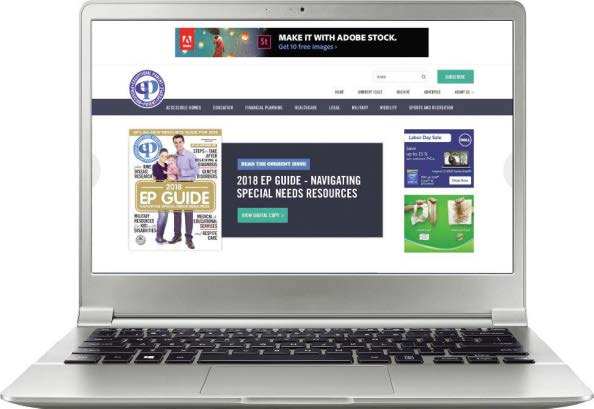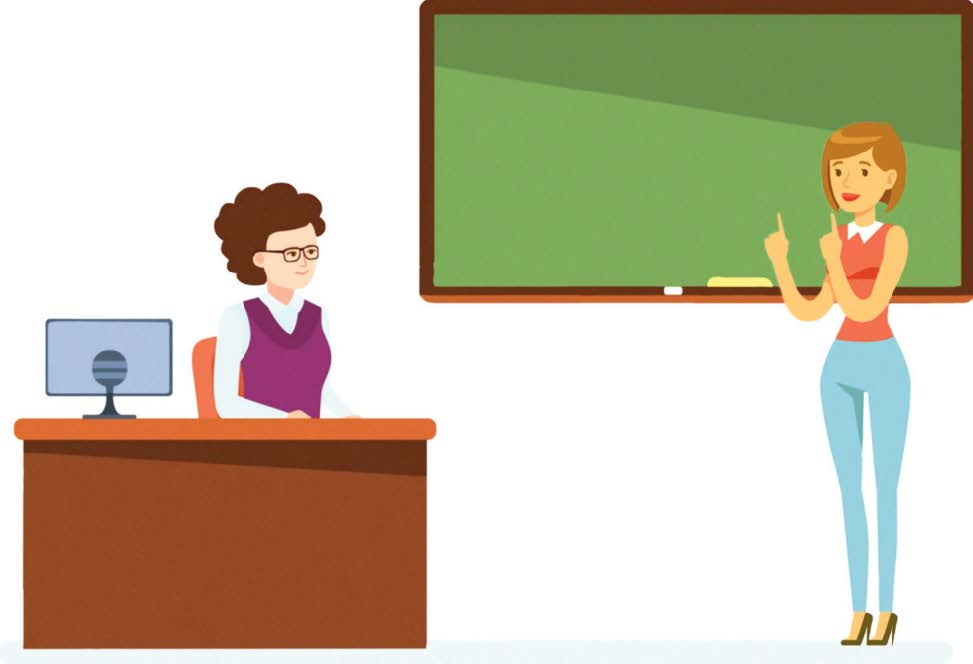
EP's Innovative New Digital Strategy
Exceptional Parent Magazine is proud to announce the launch of ep-magazine.com – our all new website which coincides with our expanding role as a leader in the field of special needs publishing and communications.
ep-magazine.com now features a bold new design and intuitive site-wide navigation system with improved menu functionality that directs you to the information most relevant to you. It is also fully responsive with mobile devices, making it easy to navigate on a wide range of web browsers and portable devices.
We've introduced a range of new content to the website, including In This Issue that highlights selected content from our latest issue, and From Our Contributors, which features the most recent offerings from regulars such as Genetic Alliance and the AADMD.
Our eNewsletter is the latest innovation in our digital strategy, enabling you to sign up for updates right on the homepage, and access the articles that matter to you each and every week. We also plan to continue adding more video content and product information to provide you with all of the resources you need to care and plan for your loved one with special needs.
We're really proud of the new website and feel it will create the experience you're looking for when you pay us a visit. Check it out here: ep-magazine.com

ADVERTISERS: Reach a growing audience on EP's all-new website and strategically target your consumers. Our competitive advertising rates offer top-quality results for an excellent value. Our team of designers and developers are ready to create digital marketing campaigns that effectively communicate your brand's message to our dedicated online audience. CONTACT: Faye Simon at fsimon@ep-magazine.com
INTERPRETING for DEAF STUDENTS:

Parents, school districts, teachers, audiologists, and speech-language pathologists involved in education of deaf children are often ill advised regarding the effectiveness of interpreters in public school mainstreamed classes. Even though interpreting services are often recommended in the deaf student's
Individualized Education Plan (IEP), what is overlooked is the fact that many deaf children, especially preschool, kindergarten, and elementary-aged do not have a fully developed and meaningful visual language, without which the interpreter's effectiveness is greatly diminished or non-existent.
FACTS and FANTASIES
Many of these younger students are only in the beginning stages of visual language acquisition and do not yet have the expressive and receptive skills to benefit from an interpreter. Also, middle school and high school students can be impacted if the students do not have the needed language skills and incidental learning access to adequately understand the teacher's message as relayed by the interpreter. Visual language competency and use is not the only factor that contributes to a deaf student being unable to benefit from the use of an interpreter. Students who benefit from the services of an interpreter also have to be developmentally, cognitively, and socially accustomed to navigating the educational experience. Quite often, school districts believe that the provision of an interpreter automatically provides the deaf student access, participa tion, and membership into the hearing educational environment. More times than not, this does not happen.
The Individuals with Disabilities Education Act (IDEA) affirms that, based on assessment, interpreting services for deaf and hard of hearing students should be appropriate and will effectively serve the student. For many of these students, interpreting is the primary support service, and often the interpreter is the only sign language model the deaf student has access to. If the student is still acquiring foundational language, making linguistic strides through interpretation alone is in itself challenging, if not impossible. When this is the case, the educational team must consider alternate or additional roles/positions with language-fluent staff who are trained to provide language planning and instruction that leads the student to having a foundational language in which interpreting can be beneficial.
Often, deaf students state that they prefer direct communication with their classroom teachers in the K–12 setting that is more efficient, effective, and empowering than with interpreted communication. Thus, the Individualized Education Program (IEP) team must consider the restrictiveness of the recommenced placement site for the student. With assessment data and anecdotal evidence from the educational team, IEP teams should consider whether or not direct instruction from a qualified educator or from an interpreter would best assure an appropriate and least restrictive educational environment. When direct communication cannot be made available for all or part of the educational process, it is critical that quality standards for interpreters and other members of the educational team be implemented.
Interpreters should not be required to perform in roles in which they are not trained and qualified: as tutors, Deaf Education-related specialists, counselors, or teachers. This can lead to confusion and misunderstanding among colleagues, parents, and students. Interpreters should never be expected to unilaterally decide educational supports that students might need. Interpreter preparation programs generally provide training from a community interpreting perspective, not how to match the language needs of a child whose language is still emerging. If an interpreter is expected to serve an expanded role, it should be formalized and discussed with the instructional staff, the parents, and the student, and all instructional supports should be guided and monitored by a qualified educator and included in the Individual Education Program (IEP).
E ven though interpreting services can be valuable to deaf and hard of hearing students who possess a high level of linguistic skills, these services are a complicated process; yet, they remain a predominant provision for deaf and hard of hearing students who attend public school programs. Certainly, not all students are prepared to access educational programs in this manner. Therefore, in order to provide a truly least restrictive education in the most appropriate environment, decisions made by the Individual Education Program team regarding interpreting must be carefully and judiciously made.•
ABOUT THE AUTHOR: J. Freeman King, Ed.D. is Professor, Deaf Education, Utah State University, Logan, Utah.

The following questions are presented for consideration by all educational programs that are considering the use of interpreting services:
In what manner do educational programs assess a student's linguistic competency in sign language and make programming decisions accordingly?
Only teachers of the deaf, speech-language pathologists or diagnosticians who possess expertise in a receptive and expressive visual language, such as American Sign Language (ASL), should be entrusted with the responsibility of assessing student sign language competency. If this expertise is not evident, the school district or the program must assure that it is.
Do interpreting services provide a restrictive environment or a least restrictive environment?
If a student is not linguistically prepared, the IEP team needs to implement programming that provides a natural language environment for its facilitation. Natural sign language environments should include native sign language users (well qualified deaf individuals) or hearing professionals who are competent in the visual language. Also, students will benefit socially and linguistically from age-appropriate peers and adult language models. Adult language models can serve as classroom teachers, teacher aides, and tutors.